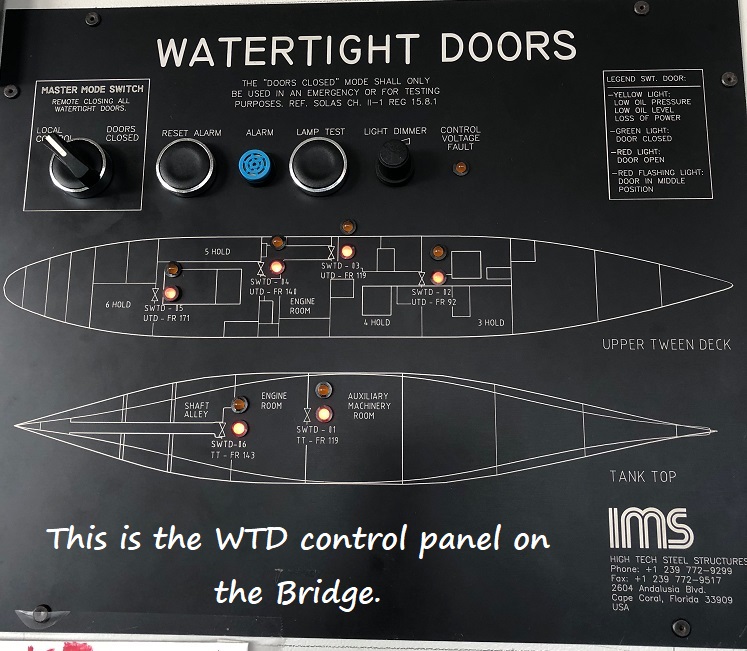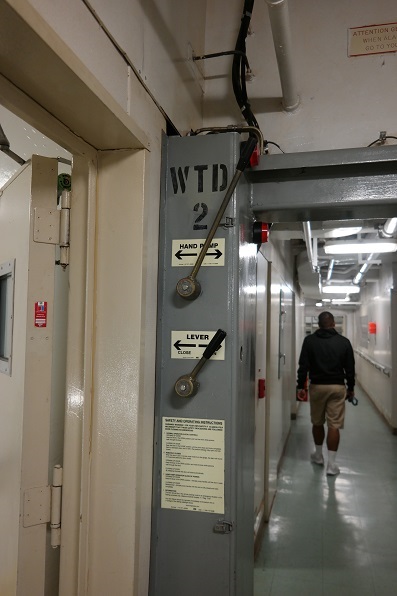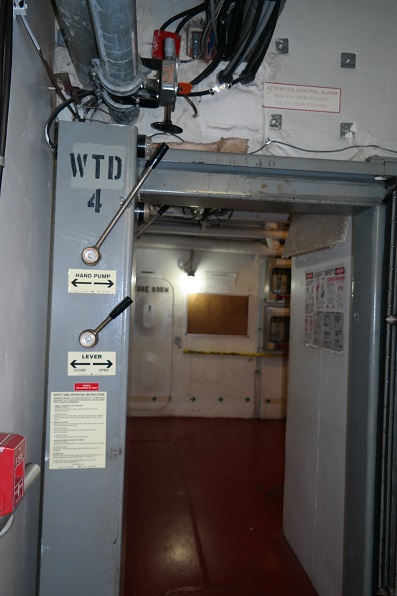
Good morning, Followers –
I am always up extra early on the days that we arrive in port. After having light rain earlier in the week, this weekend promises to be sunny and humid. Because this is our second port, cadets in Division 2 will have three days of liberty. The remaining three divisions will have liberty on two of the three days. Cadets are excited that they will be able to see Venezuela in the distance.
I have received a few emails asking if the TS Kennedy has watertight doors or weathertight doors. Actually, we have both. If you are confused about the difference between these two types of doors, you are not alone. Many people get mixed up.
Weathertight doors are found on or above the Main Deck. Their purpose is to keep seawater on the deck from the getting inside the ship during foul weather. You’ll notice that these weathertight doors are not flush with the deck, requiring that you step up and over to get in and out. They are very different than the exterior doors that your school has. Weathertight doors open outward to keep a positive pressure against any water that could be forcing against them. The doors are not only closed, they are dogged. Dogged has nothing to do with pets. This means that they are secured with several levers.
The TS Kennedy’s watertight doors are located on the interior of the ship, below the waterline. They are built to stop the pressure of water from either side. Watertight doors open and close by sliding sidewards. In case of emergency, the doors may be closed manually with a hand-pump. They may also be closed automatically from controls on the Bridge or on the Quarterdeck. On the Bridge, steady red lights on the panel show that the watertight doors are open. Flashing red lights indicate that the doors are closing. The lights glow green when the doors have closed.
Although watertight doors are designed to people safe in an emergency, they could prove to be deadly to people who ignore alarms, warning signs, and explicit directions. Cadets and crew members receive extensive safety training. One major focus is what to do and not do if they encounter a closing watertight door.
You have probably seen someone running to catch an elevator. Rather than waiting, he or she may have stuck a hand or a leg into the tiny open space causing the door to bounce open. While this may prove successful with a closing elevator door, it absolutely will not work in the case of a closing watertight door. Any person attempting to squeeze through a watertight door could lose an arm, a leg, or worse.
Some students have sent me questions asking about the watertight doors on the RMS Titanic. Although I consider myself an expert on the TS Kennedy, I do not speak with authority on any other ship. You will have to do your own research.
Wishing you a good weekend. I will write another log on Monday. Thank you for following our cadets.
Sincerely,
Captain Michael J. Campbell
Here are the photos that Captain Campbell requested. Study each photo. Read any captions that have been added.
Here are the three ways that the watertight doors (WTD) can be opened and closed.

These instructions are displayed by every watertight door.
Here are photos of the watertight doors.


That's it for the watertight door photos. I will get some great photos of weathertight doors on deck and post them at a later date.